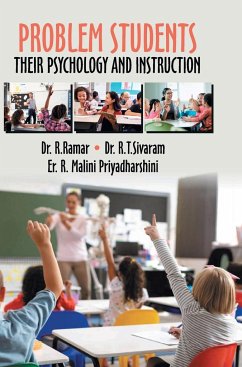The authors seem to have embarked on a sincere endeavour to disseminate what they know about the various types of problem students, their psychology and instruction. Based on reviews and research findings, strategies for coping with specific problem behaviour as well as teaching strategies are provided for each type of problem students. The book consists of V parts. Part - I opens the tapestry of concept of problem students and focuses on socialising students. Part - II covers the students with achievement problems such as low achievers, failure syndrome students, overly perfectionistic students, underachievers and slow learners. Part - III concentrates on students with hostility problems. i.e. hostile aggressive students, passive aggressive students and defiant students. Part - IV focuses on students with role adjustment problems such as hyperactive students, distractible students and immature students. Part - V dwells upon the students with social relationship problems. i.e. students rejected by their peers, shy/withdrawn students and emotional students. This book will be a green pasture with a wide variety of things to lure the research scholars who intend to do research on any type of the problem students in future. Also, this book will be of immense use for the students pursuing, B.Ed and M.Ed courses in various universities. Above all, this book will serve as a Handbook for the educational practitioners at various levels to cope with as well as to teach the various types of problem students in their classrooms. It is hoped that this book will receive wide acclaim from students, teachers and research scholars by giving them a better insight and better preparedness to accomplish their task with a considerable degree of success.








